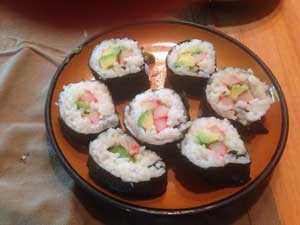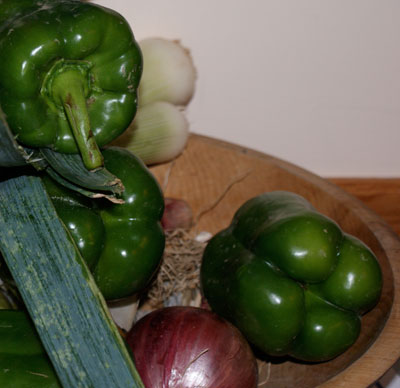
Cooking from scratch
People used to always encourage me to make tacos – the kids love tacos – but I never did because people meant for me to buy canned refried beans and pre-made tortillas and that’s not cooking, it’s just assembling. But then I thought, I’ll try making my own refried beans and tortillas. And it turns out to be pretty easy, and much better than the store ones. And no, you don’t have to soak the beans.
How to make Tacos:
About an hour and a half before dinner (or the night before), put a half a cup of pinto beans (or black beans) in a gallon of water on to simmer in a saucepan. You’ll probably need to simmer for about an hour and a quarter, or until the beans are soft enough to cut in half with a fork.
When the beans are nearly done, preheat the oven to 425. Take a medium-size mixing bowl and mix 1 1/2 cups of masa flour with 1 cup of water and a pinch of salt. You should get a soft dough. Knead it a little in the bowl. Grease a cookie sheet with plenty of olive oil or safflower oil.
Scoop up golf-ball size balls of the dough and put them on the cookie sheet. Use the palm of your hand to mash the balls flat; they should be about 3-4 inches in diameter. If the dough sticks to your hand, oil your hand a little. Bake the tortillas in the oven until they are crisp and brown, about 20 minutes.

Mashing the refried beans
While the tortillas are baking, chop an onion and saute the chopped onion in a frying pan. While the onion is frying, drain all the water from the cooked beans and pour them into the frying pan with the onion. Stir pretty often (this is the refrying part) so it doesn’t burn. Use a potato masher to mash it together as it fries. Add a pinch of salt and a pinch of pepper. Scoop it out into a bowl.
On the counter, line up your ingredients for assembly: a plate with the tortillas, then the bowl of refried beans, then a bowl of shredded lettuce, chopped tomatoes and/or bell peppers, a bowl of Greek yogurt, a bowl of tomato salsa (or make salsa by mixing tomato sauce and spices), and a bowl of grated Cheddar cheese.
Vegetarian or vegan?
Naturally vegan if you leave off the yogurt and cheese. You can make it a meat dish by adding some chicken or hamburger. Or add crumbled, fried seitan to be like hamburger but vegan. Do the meat on a cookie sheet in the oven while you’re cooking the rest.
And will tacos keep?
The refried beans will keep for a few days, but the rest is better fresh.






